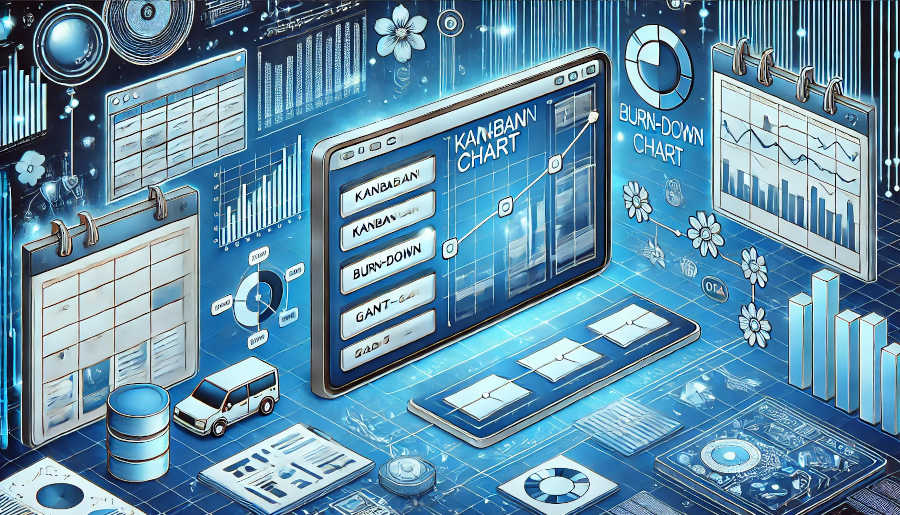Understanding the IPD Project Flowchart
The IPD project flowchart is a visual representation of the project's lifecycle, detailing the sequence of activities and decision points from inception to completion. It serves as a roadmap, guiding the team through each phase of development. A well-constructed flowchart not only outlines the tasks but also identifies the key stakeholders involved at each stage. This clarity is essential for effective communication, as it ensures that the right information reaches the right people at the right time. Without a clear flowchart, the project risks falling into disarray, with miscommunications leading to delays and errors.
In designing the IPD project flowchart, it is crucial to consider the diverse needs of the stakeholders. Engineers, for instance, require detailed technical specifications, while marketing teams may need broader strategic insights. The flowchart must therefore be flexible enough to accommodate these varying requirements, ensuring that each stakeholder receives the information they need in a format that is accessible and actionable. This adaptability is key to maintaining a cohesive and informed team, which is vital for the success of the IPD approach.
Moreover, the flowchart should incorporate feedback loops, allowing for continuous improvement and adjustment throughout the project lifecycle. These loops enable the team to identify and address issues promptly, preventing minor misunderstandings from escalating into major problems. By embedding these feedback mechanisms into the flowchart, the project team can foster a culture of open communication and collaboration, which is essential for the iterative nature of IPD.
Designing the Communication Mechanism
The design of the communication mechanism within the IPD project flowchart is a multifaceted process that requires careful planning and consideration. At its core, the mechanism must facilitate seamless information flow between all stakeholders, ensuring that everyone is on the same page. This is achieved through the establishment of clear communication channels, protocols, and tools. For instance, regular status meetings, collaborative platforms, and real-time updates are essential components of an effective communication mechanism.
One of the key challenges in designing the communication mechanism is balancing the need for comprehensive information with the risk of information overload. It is important to strike a balance, providing stakeholders with the necessary details without overwhelming them with excessive data. This can be achieved by categorizing information based on its relevance and urgency, and by using visual aids such as dashboards and infographics to present complex data in an easily digestible format. By doing so, the communication mechanism can enhance understanding and decision-making, rather than hindering it.
Another critical aspect of the communication mechanism is its adaptability to changing project dynamics. As the project progresses, new challenges and opportunities may arise, requiring adjustments to the communication strategy. The mechanism must therefore be designed with flexibility in mind, allowing for the incorporation of new tools and protocols as needed. This adaptability ensures that the communication mechanism remains effective throughout the project lifecycle, supporting the team in navigating the complexities of IPD.
Implementing the Communication Mechanism
The implementation of the communication mechanism within the IPD project flowchart is a critical phase that requires meticulous execution. It involves not only the deployment of the designed communication tools and protocols but also the training and onboarding of the project team. Effective implementation ensures that all stakeholders are familiar with the communication mechanisms and understand their roles and responsibilities within the system. This is essential for fostering a culture of transparency and collaboration, which is the cornerstone of successful IPD projects.

During the implementation phase, it is important to monitor and evaluate the effectiveness of the communication mechanism. This can be achieved through regular feedback sessions, surveys, and performance metrics. By continuously assessing the mechanism's performance, the project team can identify areas for improvement and make necessary adjustments. This iterative approach ensures that the communication mechanism remains aligned with the project's evolving needs, enhancing its overall effectiveness.
Furthermore, the implementation phase should also focus on fostering a sense of ownership among the stakeholders. When team members feel invested in the communication mechanism, they are more likely to actively participate and contribute to its success. This can be achieved by involving stakeholders in the design and implementation process, and by recognizing and rewarding their contributions. By creating a sense of ownership, the project team can build a strong foundation for effective communication, which is essential for the success of the IPD project.
Conclusion
In conclusion, the design and implementation of a robust communication mechanism within the IPD project flowchart are critical for the success of any IPD project. By understanding the intricacies of the IPD project flowchart, designing a flexible and adaptable communication mechanism, and meticulously implementing it, project teams can ensure that all stakeholders are aligned and informed throughout the project lifecycle. This not only enhances the efficiency and quality of the project but also fosters a culture of collaboration and innovation, which are essential for the success of IPD.
The importance of communication in IPD cannot be overstated. It is the glue that holds the project together, ensuring that all team members are working towards a common goal. By prioritizing communication and continuously refining the communication mechanism, project teams can navigate the complexities of IPD and achieve their objectives. Ultimately, a well-designed and effectively implemented communication mechanism is the key to unlocking the full potential of the IPD approach.
FAQ
1.What are the key components of an effective communication mechanism in IPD?
An effective communication mechanism in IPD includes clear communication channels, protocols, and tools such as regular status meetings, collaborative platforms, and real-time updates. It also involves categorizing information based on relevance and urgency, and using visual aids to present complex data.
2.How can feedback loops enhance communication in IPD?
Feedback loops allow for continuous improvement and adjustment throughout the project lifecycle. They enable the team to identify and address issues promptly, preventing minor misunderstandings from escalating into major problems. This fosters a culture of open communication and collaboration.
3.Why is stakeholder ownership important in implementing the communication mechanism?
Stakeholder ownership is important because when team members feel invested in the communication mechanism, they are more likely to actively participate and contribute to its success. This can be achieved by involving stakeholders in the design and implementation process, and by recognizing and rewarding their contributions.
ARTICLE TITLE :Design and implementation of the communication mechanism in the IPD project flowchart ,AUTHOR :ITpmlib

















